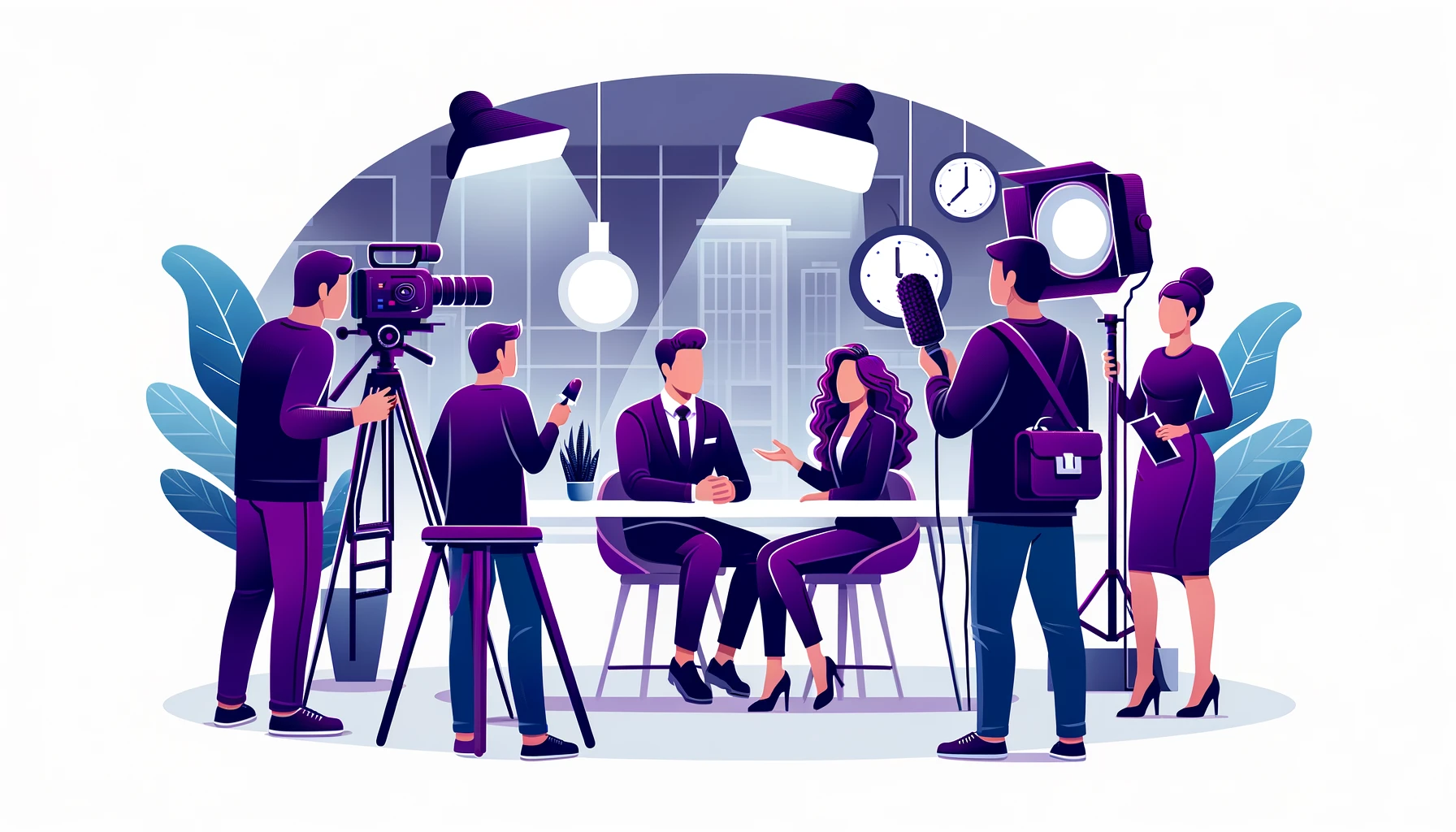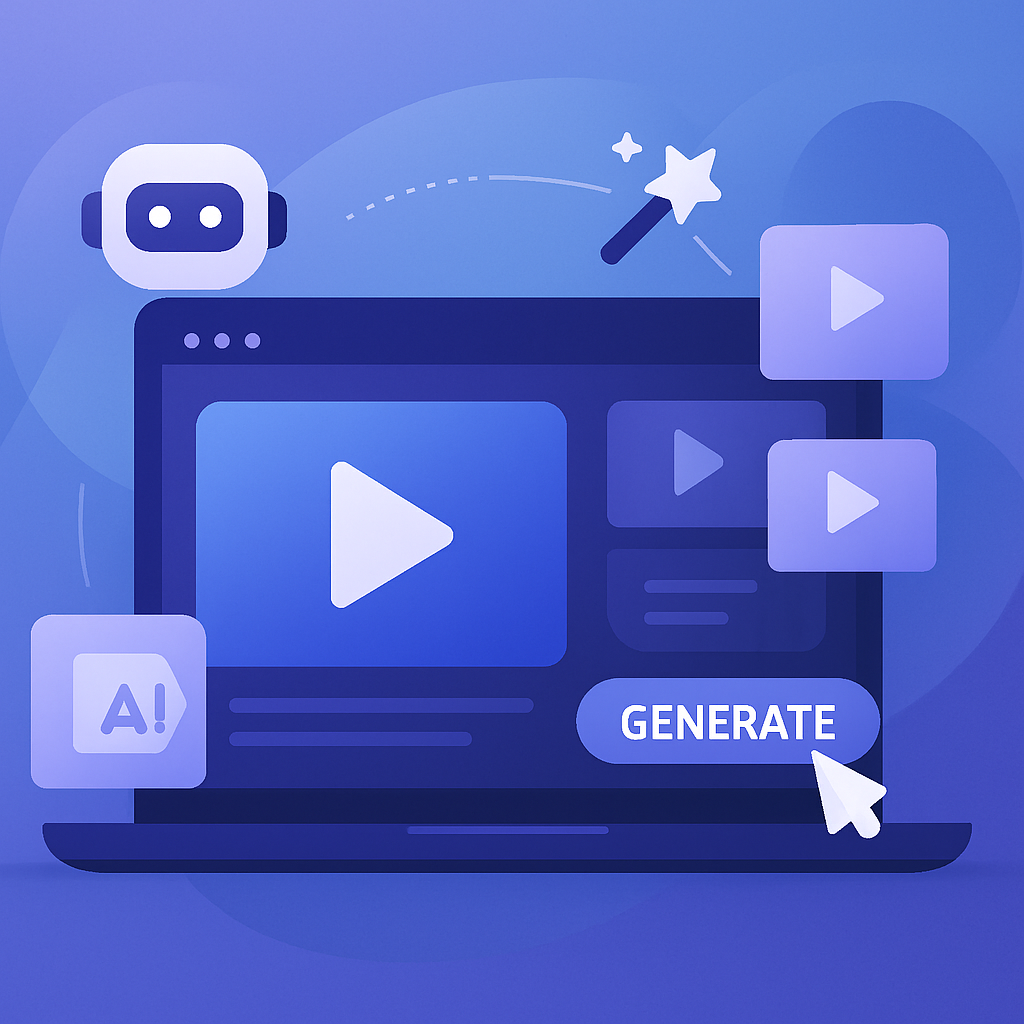
Create AI videos with 230+ avatars in 140+ languages.
Silence isn't always golden — often, it's a red flag.
When you rely only on customer feedback to measure your support staff's success, you easily miss big issues. An estimated 96% of unhappy customers don't complain and never give feedback. They just walk away.
And that means you need another metric to measure if you want to make sure your customer service department provides excellent support.
Good customer service training can help you increase satisfaction scores even when mistakes happen.
With the right training, you can trust your support staff to handle situations gracefully and turn tho se silent, unhappy customers into success stories.
In this blog post, you'll find unique customer service training ideas. But we also back them up with expert insights and practical tips to create standout customer service training. Let's show you how to make support agents your biggest assets.
What does five-star customer service training involve?
A customer service training program educates your team on how to make every customer feel valued and happy, turning every interaction into a positive experience. There are countless ways to train your support staff:
- Engaging training videos. These often include role-playing dialogue, crisis communication coaching, and reflective listening and communication skills. Gamification is a great way to add interactivity to your video training.
- Mentorship & job shadowing. Support is all about empathy, and helping your staff understand other roles in the business will enable them to be more knowledgeable, build better internal relationships, and creatively resolve problems. This could be as simple as holding weekly "lunchtime learning" sessions or doing regular product demonstrations for tricky features.
- Personality tests. Different personalities have different strengths and weaknesses. Some might need to practice saying "no" in a safe environment. Others might need to see what life is like from the customer's perspective and need training on cultural preferences or habits.
- Call reviews. Developing a random call review program can help you spot-check the quality of your agents and provide valuable feedback in real time.
- Competitive research. Get staff to sign up for your product and a few competitor products. Have them reflect on their strengths and weaknesses to motivate them to do better than others and help them understand the competitive landscape.
These are great customer service training ideas you can find all over the web, but a few specialists know how to take them one step further. To see how to apply them for your next training initiative, keep reading!
Idea 1: Make your training video modules more engaging with interactivity
Video is already an engaging format for plenty of types of training (for example, onboarding or soft skills training videos). You'll take your video training to the next level by adding interactive elements such as quizzes, clickable hot spots, and decision branches.
Reputation specialist Jeff Edwards says, "You can train until you are blue in the face, but there is no replacement for experience. Coming across real clients with real problems and solving them with the help of your team is where you will really grow!"
Interactive videos are highly effective customer service training activities. Within an interactive training session, you can give your support staff real experience before they talk to a customer.
First, turn your training ideas into videos with an AI video maker like Synthesia. Next, use interactive software like Articulate 360 or Easygenerator to add clickable quizzes and buttons.
Here are two examples of what you can create:
(Check the full interactive training video course here.)
(Check the full interactive training video course here.)
Practice is, indeed, the best teacher. That's why creating interactive training videos based on real-life situations makes learning more effective.
Why this idea fosters excellent service
- Learners make choices that impact the training.
- Interactivity adds excitement and involvement.
- Rapid, specific feedback enhances learning.
Idea 2: Use AI to train staff on hundreds of role-playing scenarios
Role-playing helps customer support reps practice handling various interactions in a controlled, dynamic environment. Studies show role-play leads to:
- 75% average retention rate (vs. 5% for lectures and 10% for reading)
- 30% higher sales performance
- 20% increase in confidence
With an AI video maker, you can model any sales or customer complaint dialogue from a simple video template. Duplicate the template below and customize it:
For more complex dialogues and scenarios, use Synthesia's special Dialogue feature:
Why this customer service training idea works
- AI creates realistic scenarios on a wide range of customer service training topics.
- Role plays on how reps should address customers can be easily adapted based on trainees' reactions.
- AI scenarios are a great starting point for deeper discussions on complex customer issues.
Idea 3: Organize sensitivity workshops to help your reps become culture-savvy
Sales reps often interact with global audiences, so cultural sensitivity is key to building better relationships and gaining loyal customers. It's also essential to a customer-centric culture.
As cultural educator Aunty Munya Andrews notes, "Cultural sensitivity means that you are aware and accepting of cultural differences. It implies that you withhold judgment of cross-cultural practices and that you can deal effectively with these differences."
Among the different customer service training ideas, workshops are great for instilling cultural sensitivity. They can include interactive talks, live role-plays, guest speakers from diverse backgrounds, VR for immersive cultural experiences, and short, catchy videos like the one below:
To improve customer service standards with cultural sensitivity, start by identifying your customers' cultural demographics. Then, tailor workshops to address their customs, values, and communication styles. Encourage reps to reflect on their cultural biases and how they might impact their interactions and customer loyalty.
Why this idea works
- Reduces misunderstandings and unintentional offenses.
- Develops understanding and empathy.
- Provides tools to de-escalate situations and find inclusive solutions.
Idea 4: Schedule catchy lunchtime learning sessions around weekly themes
Lunchtime can be a fun way to squeeze in some learning. Sara Louro, Head of Communication at Sage, says, "Why choose between pizza and learning when you can have both? Our colleagues are diving into micro learnings while enjoying slices of pizza, making the most of every moment to grow and connect."
For a relaxed learning vibe, host your lunchtime learning sessions outside the office. Offer free lunch to make it feel like a treat and set up a rewards system with points or badges for prizes or recognition. Keep it short and engaging with video content and AR or VR experiences. And most importantly, have a clear weekly schedule like this:
Monday: Intro to the week's theme with a short video and interactive quiz.
Tuesday: Guest speaker or expert panel discussion.
Wednesday: Role-playing exercises and group activities.
Thursday: Hands-on workshop or tech demo.
Friday: Recap and feedback session.
Why this idea works
- It's convenient and requires a low time commitment.
- Weekly themes keep it interesting.
- Regular, focused sessions support ongoing learning.
Idea 5: Walk reps through client onboarding to practice being a good customer
Customer experience specialist Bill Warren says, "Onboarding is the time to build trust with the client. If you don't do that it's like a bad first date. You don't always get a do-over." But having your staff go through the customer onboarding process gives you a valuable rehearsal and helps you anticipate potential customer problems.
When agents practice being good customers, they better understand customer perspectives. Use the same platforms and tools your customers use. Make your reps go through the same steps, from initial sign-up and product tutorials to support interactions and feedback mechanisms.
In the end, plan feedback sessions where the customer reps can share insights and suggestions for improving the onboarding process based on their experiences.
Why this customer service training idea works
- Agents become more empathetic by stepping into customers' shoes.
- Practical training is more relevant and impactful, leading to increased customer satisfaction.
- Reps can anticipate common issues and create proactive solutions.
Idea 6: Customize coaching based on your agents' personality test results
Personality tests are a fun way to see which agents might excel in certain roles. But once you've figured out each rep's personality type, the challenge is supporting their growth based on it.
Caroline Kina Ikiara, a customer experience professional, confirms, "There is a service personality! [...] Some individuals are wired to thrive on connecting with people, finding joy in every interaction."
Shep Hyken, a customer service expert, also highlights that some traits (which can be found in different personalities) make for exceptional customer service:
To explore this path, you must:
- Have your customer service team take personality tests like the Myers-Briggs Type Indicator (MBTI) or CliftonStrengths.
- Use the results to create custom growth plans, providing tailored support and improvement resources.
- Schedule one-on-one sessions where trainers discuss test results and give personalized guidance.
- Use AI to scale your customer support training, creating videos from plain text around specific topics, core skills, or employee strengths.
Worried that your agents might not have the "right" personality type for the job? Customer advocate Melissa Bardsley argues you shouldn't: "There is strength in diversity. And diversity here is different personality types, different approaches to problem solving, and different communication styles. Having a mix can help you overcome challenges and have a more successful team."
Why this idea works
- Managers understand each agent's strengths and growth opportunities.
- Agents feel more engaged with personalized training.
- Scalable and custom AI training fosters a learning culture that boosts employee loyalty.
Idea 7: Support cross-department mentorship and job shadowing
Use video conferencing tools for modern mentorship and job shadowing. These tools make shadowing virtual, letting the service rep observe customer service interactions remotely.
You can try Zoom (record customer interactions and have mentors and mentees chat privately in breakout rooms), Slack (integrates with lots of tools that allow mentorship sessions within the broader workflow), or BlueJeans (for Dolby Voice audio, screen sharing, meeting recording, and integrations with productivity tools).
To give it a twist, encourage mentors and mentees from different departments to team up. This helps agents understand how various departments contribute to the overall customer experience.
In a Forbes article, Natasha Koifman, founder and president of NKPR Inc., says, "Having a mentor is more than just setting and achieving goals; it's about having someone in your corner […] to help you grow both professionally and personally." She adds, "To maximize the success of this relationship, the mentee should come in with an open mind, be willing to learn, and, most importantly, put in the required work."
Why this idea works for customer service agents
- Virtual sessions are easier to schedule and join.
- Observing interactions provides practical insights.
- Employees build relationships and share best practices across teams.
Idea 8: Routinely test with scenario-based crisis communication
Stress tests prepare employees for handling crises like service outages, social media scandals, or product recalls by simulating high-pressure scenarios.
Crisis management connoisseur Eric Pinkerton points out that "Crisis management boils down to your ability as an organization to make the right decisions, quickly and consistently [...] Sometimes the right approach is to do nothing, but this has to be a conscious decision rather than a consequence of decision paralysis."
To help your customer service representatives avoid decision paralysis, make stress tests a routine part of training. Use platforms like Polpeo (for general public relations management) or Social Simulator (for social media crisis management) to create scenarios, track responses, and provide feedback.
Why this customer service training idea works
- Simulations provide experience that is directly transferable to the real world.
- Regular stress tests reduce anxiety and build confidence.
- Staff learns critical thinking and problem-solving under pressure.
Idea 9: Have your customer reps reverse-engineer product demonstrations
Reverse-engineering a product involves disassembling and reassembling it to see its components, grasp its functionality, and notice potential issues that customers might face.
Give your customer service team detailed product guides and tools they can use for this purpose. Organize workshops where they can perform these tasks under the supervision of technical experts or use VR to train them on the product.
When possible, supplement hands-on experience with technical knowledge sessions that explain the science and tech behind each product component.
Here's an example:
Why this idea works for customer service agents
- Hands-on experience leads to deep technical understanding.
- Practical activities sharpen analytical skills.
- Detailed product knowledge improves customer interactions.
Idea 10: Train staff to avoid saying no with improvisational theater techniques
Don Crawley, author of The Compassionate Geek, says, "It's not a matter of never saying no to a customer. It's a matter of how you say No to maintain happy customers." Learning to refuse customer requests without saying "no" is a valuable skill, but you don't have to teach it the classical way. Instead, you can try one of the more exciting customer service training ideas explained below.
Get your staff to work on some improvisational theater exercises. These will help them navigate conversations and find creative solutions that are not obvious in a scripted approach. To vary your activities, you can also have your agents work with exercises like "Yes… And…" that build on what the customer says instead of shutting them down. Or teach them transformative phrasing techniques to reframe negative responses into positive, constructive feedback.
Example scenario:
Customer: "I need this feature added to the software by next week. Can you make that happen?"
Traditional response: "No, we can't add new features that quickly."
Transformative response: "I understand how important this feature is for you. Yes, adding new features can greatly enhance your experience. And while it might take us longer than next week to implement this specific feature, I can assure you that your request will be prioritized for our next update. In the meantime, I can show you some existing features that might help achieve a similar result. Would you like to explore those?"
Why this customer service training idea works
- Encourages thinking outside the box for unexpected solutions.
- Emphasizes creating connections and building rapport.
- Helps reps reframe situations and offer alternatives, avoiding a direct "no."
Idea 11: Organize active listening triads to make your reps effective listeners
In this idea, a customer service agent gets the chance to practice active listening by paraphrasing and summarizing while the observer provides feedback. This is done by creating "a triad" of three employees: one who speaks, one who listens, and one who observes.
The key is to rotate roles so every support team member gets to speak, listen, and observe. Use specific customer service scenarios during regular meetings or dedicated training sessions. Afterward, schedule debrief sessions to discuss what was learned and how to apply these soft skills in real interactions.
Why this idea leads to excellent customer service
- Develops strong active listening skills.
- Observer provides real-time, constructive feedback.
- Practical scenarios with frustrated customers make the exercise relevant.
Idea 12: Turn your agents into deal detectives with call reviews
Have your agents regularly analyze previous calls to identify what caused poor customer service or where the sale was lost. They can work individually, in pairs, or in small groups to discuss findings and share insights. This is one of the more out-of-the-box ideas for customer service training, fostering a collaborative environment with constructive feedback.
Zoom used this unique customer service training strategy with a twist. The company improved its training video production by 90% and focused on interactive videos as part of its Deal Detective program.
Here's an example:
Why this idea works for your service team
- Improves critical analytical and customer service skills.
- Makes it easier to spot mistakes and learn outside the pressure of live calls.
- Identifies potential upselling or cross-selling opportunities.
Idea 13: Call your competitor and analyze their performance with AI analytics
Mystery shopping isn't new, but using AI to enhance it is smart. You just have to call your competitor's customer support, act like their unsatisfied customer, and use a tool like Chorus by ZoomInfo to analyze the convo.
This way, your customer service representative focuses on the conversation while AI handles the analysis. AI can quickly review the call, revealing patterns, sentiment, and areas of strength or weakness in the competitor's service.
Why this idea helps improve your own customer service experience
- Combines human intelligence with AI for better results.
- Provides valuable competitive intelligence for strategic advantage.
- AI processes data quickly and accurately, making analysis more efficient.
Idea 14: Gamify the training process to make your reps more invested in learning
72% of employees say gamification motivates them to do more tasks and work harder. That's because customer service training games are fun and make learning more effective. So, implement a gamification platform like Centrical to turn customer service training into an engaging and competitive experience with games, quizzes, and leaderboards.
Karl Kapp, professor of Instructional Technology at Bloomsburg University, says "You should integrate learning games into your training programs because they're engaging, they're instructional, and they give you great outcomes. But to achieve these outcomes, you need to think about where your learning games sit within your wider training offering."
The takeaway? You can't just create one game, and that's it. You've got to identify the areas where your customer service team can improve and create a series of activities within a gamified training program. In other words, you need multiple customer service training games that are designed and correlated the smart way.
Why are customer service training games effective
- Increase engagement, motivation, and retention.
- Provide real-time feedback.
- Foster healthy, friendly competition that leads to progress.
Create training videos for your customer service team at scale
So, you've seen the ideas and customer service training examples. You know there's so much valuable info out there that your customer service teams can use to support clients better. But to fill the gap between idea and execution, you must deliver it in a way that sparks excitement and desire to learn. Videos are an excellent tool that makes information easier to remember.
When BSH began using videos for training, they saved 70% on production costs and saw a 30% increase in learning engagement, leading to better customer service.
Start creating how-to videos from plain text, as early as today, with Synthesia, and training your customer service reps will never again be boring.
About the author
Strategic Advisor
Kevin Alster
Kevin Alster is a Strategic Advisor at Synthesia, where he helps global enterprises apply generative AI to improve learning, communication, and organizational performance. His work focuses on translating emerging technology into practical business solutions that scale.He brings over a decade of experience in education, learning design, and media innovation, having developed enterprise programs for organizations such as General Assembly, The School of The New York Times, and Sotheby’s Institute of Art. Kevin combines creative thinking with structured problem-solving to help companies build the capabilities they need to adapt and grow.















